July is here, and Summer is in full swing. The kids have been out of school since May, and so many of them have been taking swimming lessons. As parents, we watched our little ones swim proudly across the pool with their swim instructor nearby. We were on the side of the pool, clapping and smiling. We feel a little safer, knowing our precious babies have learned the basics. Our kids also now feel more confident in the pool. As a former lifeguard and swim instructor, I have to tell you, though….this is not the time to let your guard down. You can never be too careful when it comes to kids and water.
It seems like a lifetime ago, but throughout high school and college, I was a lifeguard; teaching swim lessons and eventually managed a pool. I loved my job. I did not know back then that those years spent focusing on swim safety would later cause me to be a total pool kill-joy for my kids and others. No, seriously, I still love the water, and I have instilled a love of water in all three of my girls. Our family has a backyard pool and we enjoy boating, but I find myself still sounding like a lifeguard, shouting commands at my kids and their friends like, “No running….no diving…..no horseplay!” My youngest two daughters were stumped on the horseplay comment, “Huh? We’re not playing horse. We aren’t even playing ponies.”
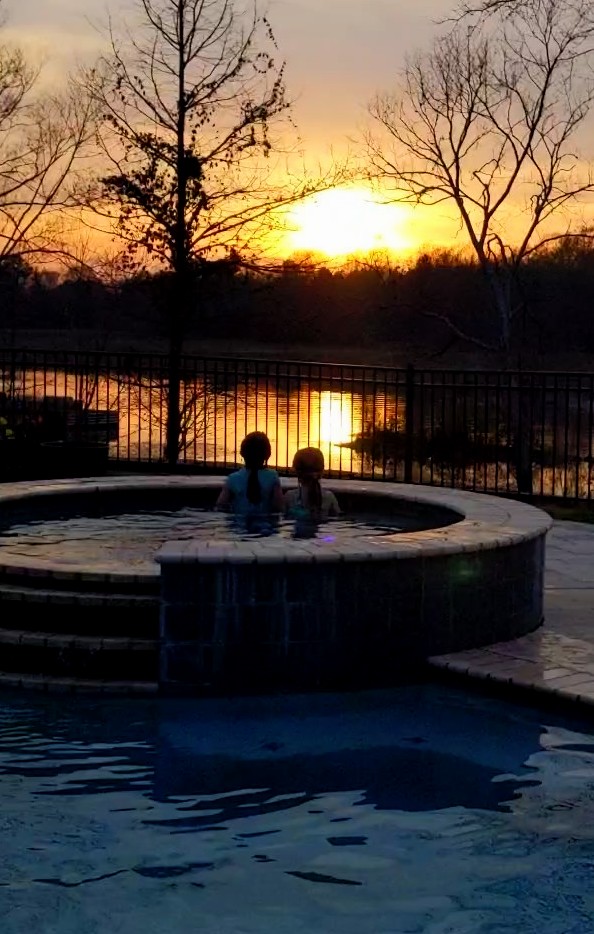
Know the Facts about Childhood Drownings
It is not just poolside safety that concerns me, though. I worry, of course, about the most terrifying of all water-related scenarios –children drowning. It is an awful thing to talk or write about, but it is a truthful concern. According to the National Drowning Prevention Alliance (“NDPA”), an organization dedicated to water safety and saving lives, America has an average of 10 fatal drownings per day.
“Twenty-three percent of child drownings happen during a family gathering near a pool.” Even worse, eighty-seven percent of drowning fatalities happen in home pools or hot tubs for children younger than five, and most of those happen in pools owned by family or friends.
We also live on the reservoir, so another scary statistic is that children ages 5 to 17 are more likely to drown in natural water like ponds or lakes.
Layers of Protection in Water Safety
Statistics are one thing, but it is absolutely heartbreaking to hear of loved ones, friends, or even acquaintances who have lost a child to drowning. I have heard far too many of these stories, and they haunt me. I do not mean to write a strictly scare-tactic article to shock and sadden readers. Instead, my hope here is to spread life-saving information. As NDPA suggests, there are “layers of protection” that can prevent drowning.
There are things we, as parents, can do to make our children and others safer around water. First and foremost, learn and annually update yourself on CPR. We have all heard the phrase, “Use it or lose it,” but unless you are a paramedic or otherwise in the medical field –or perhaps a beach lifeguard– you are (thankfully) unlikely to actually use your CPR training often or ever. Therefore, it is important to regularly update your life-saving education and training.
1. Swim Lessons
I mentioned swim lessons earlier, and, yes, they can sometimes give both parents and children a false sense of security of water safety. Just because a child seems to be able to “swim” in an expected, safe environment with adults watching nearby, does NOT mean the child will actually swim when they accidentally fall into the pool, often fully dressed. The unexpected nature of it causes panic, and suddenly everything the child learned in swim lessons is simply gone. That said, swim lessons can and do help children gain life saving skills. In some instances, the skills children learn during lessons can buy you precious seconds to actually see what is happening and save a child’s life.
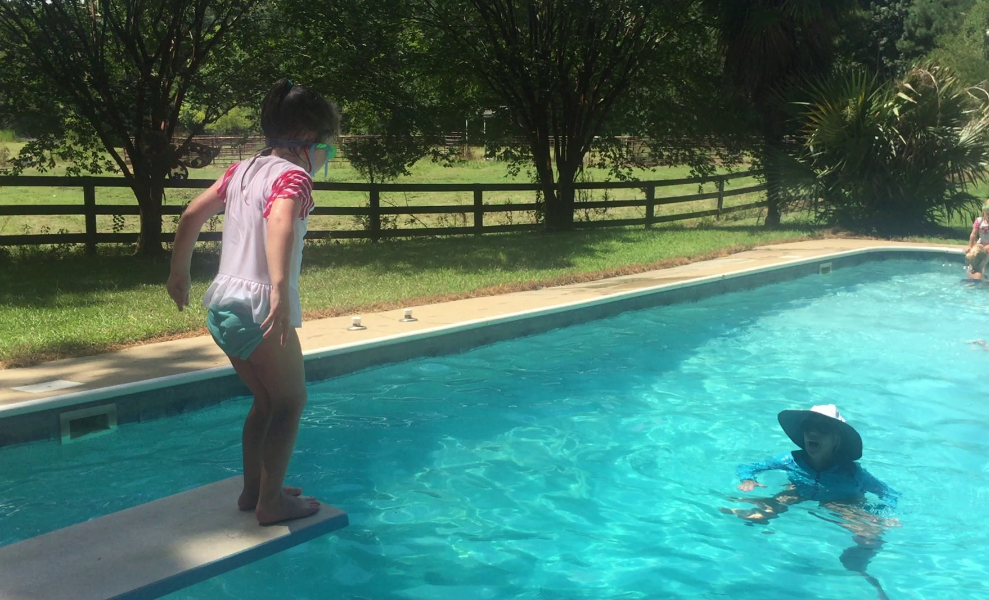
2. Barriers
Barriers are another major prevention that help save lives. Most insurance companies will insist you have a fence around any pool, but not all fencing is equal. Having four-sided isolation fences with self-closing latching gates are more secure to help keep children away from a pool. Again, though, this is only one layer of protection. The auto-latching element is important. I will never forget one of the scariest things I have ever personally witnessed. My family and I walked into our former home through the garage after being on an outing for a couple of hours, and my husband and I looked through the kitchen window and into the backyard to see a young toddler standing in our fully fenced yard walking directly toward our pool.
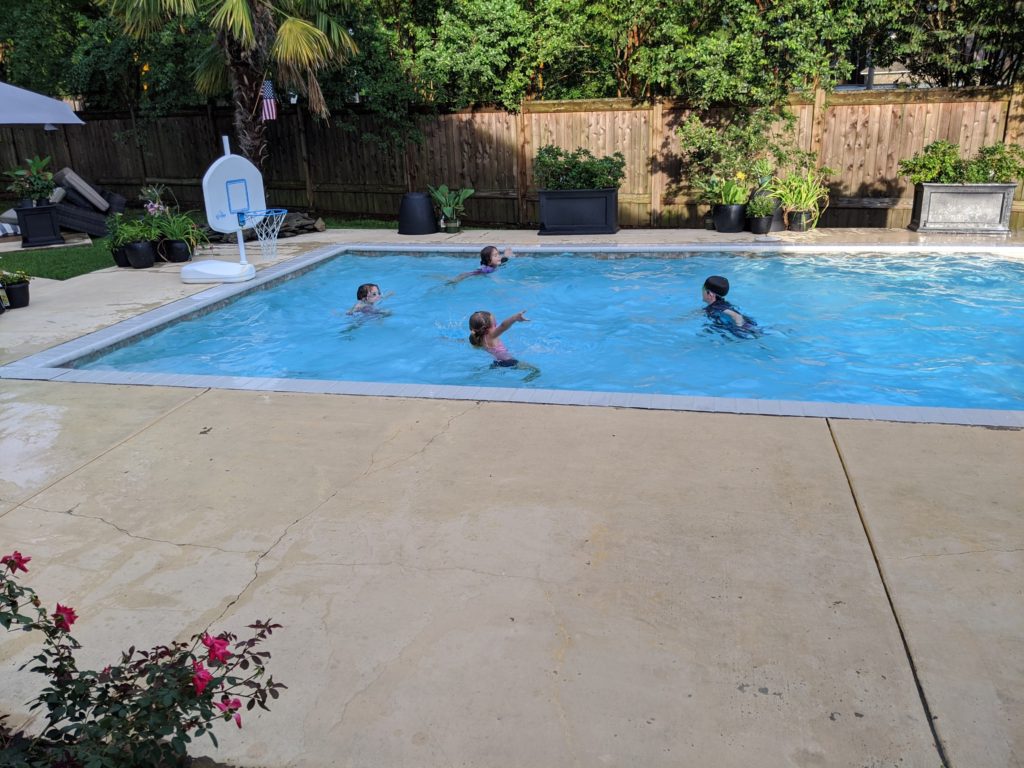
Being very aware of pool safety and having young children ourselves, the door to our backyard had a complicated process to get outside in order to keep our own kids safe from getting to the pool. My husband frantically went through the multiple locks and then through the gate outside of that to try to reach the tiny child in our backyard. Thankfully, he reached the child in time, and as it turned out, the toddler and his family were visiting our neighbors and the child had gotten out of our neighbor’s yard and into ours.
We couldn’t understand it initially, as we had a tall wood fence with a lock surrounding the yard. We later learned that the crew that mowed our grass had left the gate unlocked and cracked. Our current home now has a metal fence with auto-latch around the pool. Adding additional layers of protection around a backyard pool can be helpful, too. There are locks for interior doors, pool covers, pool alarms, and other barriers that can help make a backyard pool safer.
3. Life Jackets
Life jackets are another measure parents can take to keep kids safe. Obviously, children need to wear life-jackets while boating or when near natural bodies of water. This is true even if the children are older and are excellent swimmers. Life jackets can also be used in pools where the child(ren) are not strong swimmers. Please make sure the child is wearing a coast-guard approved life-jacket. The cute little rings and arm floaties are not life-saving devices.
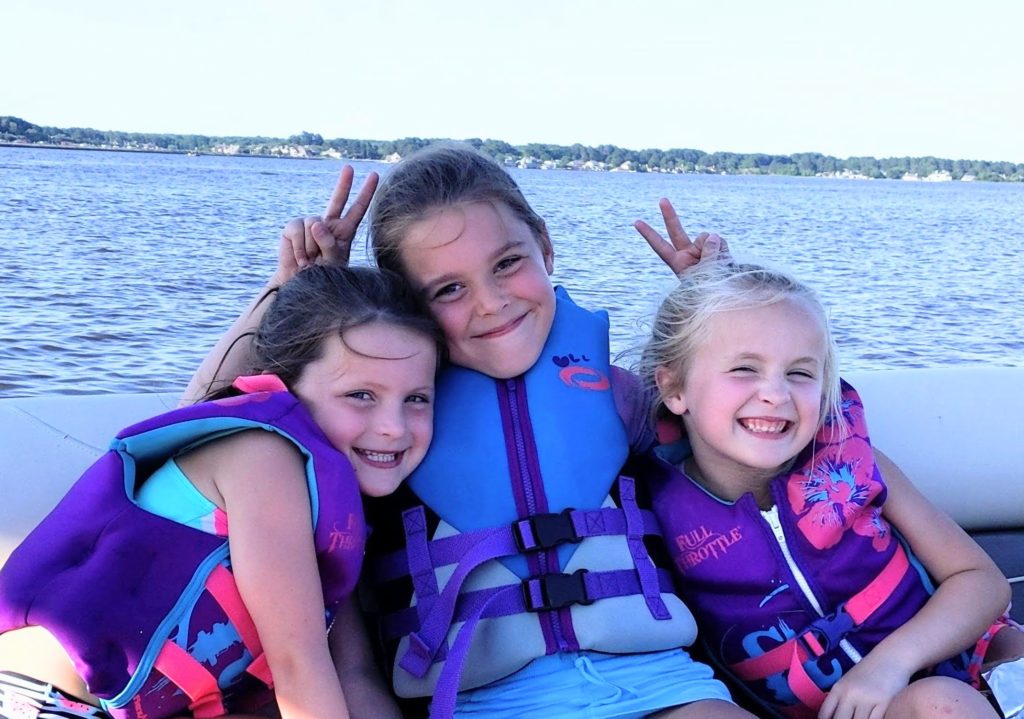
During my years as a lifeguard, the majority of times I actually had to jump in the water to save a child was when the child slipped through or off of a float of some sort. The majority of those times, the saved child’s parent was standing nearby or even in the water with the child holding onto the float while chatting with a friend. Children slip under the water quietly. It is typically nothing like you see in movies wherein the drowning victim calls for help. According to NDPA, “drowning is fast and silent. It can happen in as a little to 20-60 seconds.”
4. Vigilance
It is all too easy for even dedicated, cautious parents to miss the fact that their child is actually struggling and not swimming, which is why complete vigilance –a major drowning prevention measure– is always necessary when kids are in or near any type of water. Vigilance can mean many different things, but one important factor for staying vigilant is avoiding distractions and providing undivided attention. It is best to have at least one parent or trusted adult fully devoted to watching the child(ren) at all times, which means to avoid texting, reading, or other activities that can –even for a moment–take your focus off of the child(ren.)
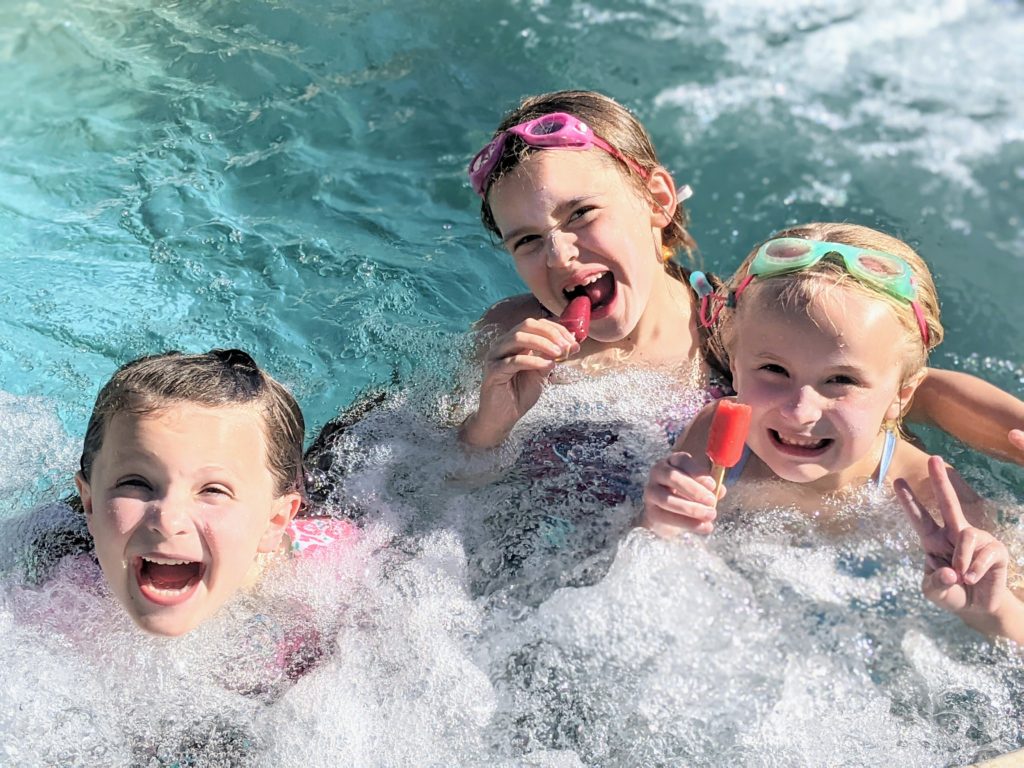
The grim statistics above are more than numbers. Those stats represent real children, real families, and good, conscientious parents who thought they were doing everything they could to protect their child(ren.) In considering various Summer writing topics, I thought about talking about throwing Summer parties or taking fun trips, but pool and water safety education is critical. Writing this article is a reminder to myself to check our own pool and water safety layers of protection. To better educate yourself on these topics and more about kids and water safety.
For more information visit ndpa.org and poolsafely.gov.
Looking for travel tips this summer? Check out “6 Travel Tips when Traveling with Family” and “Traveling with Totes“.
